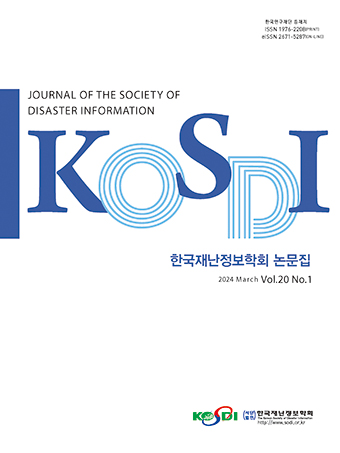Original Article
Abstract
References
Information
Purpose: It is important to operate safely and economically in obsolescent power plant facilities. Economical operation is related in the balance of the supply and demand. Safety operation predicts the possible risks in the facilities and then, takes measures to the facilities. For the monitoring of the power plant facilities, we needs several kinds of the sensing system. From the sensors data, we can predict the possible risk. Method: We installed the acoustic, vibration, electric and smoke sensors in the power plant facilities. Using the data, we developed 3 kinds of prediction models, such as, demand prediction, plant engine abnormal prediction model, and risk prediction model. Results: Accuracy of the demand prediction model is over 90%. The other models make a stable operation of the system. Conclusion: For the sustainable operation of the obsolescent power plant, we developed 3 kinds of AI prediction models. The model apply to JB company’s power plant facilities.
연구목적: 노후화된 발전기의 지속 가능한 운영을 위하여 효율적이며, 안전한 운영이 중요하다. 효율적 운영이란 경제적 관점이며, 안전한 운영은 발전 설비의 치명적 사고 발생에 대한 발생 이전의 사전 조치를 말한다. 그러므로 발전기의 지속가능 운영 모니터링을 위하여 관련된 센서 설치와 이를 기반으로 지속 가능에 대한 예측할 수 있는 모델에 대한 연구가 필요하다. 연구방법: 전기와 열에 대한 수요 예측, 엔진의 성능과 이상을 탐지하는 예측, 그리고 재 난 안전에 대한 예측 모델을 제시하였다. 이를 위하여 필요한 센서를 정의하였으며, 이를 기반으로 예측 모델을 각각 개발하여 수행하였다. 연구결과: 수요 예측 모델은 기존의 79%에서 90% 이상으로 예측 정확도를 향상시켰으며, 다른 2개 모델도 시스템의 지속가능한 안정적 운영을 지원하였다. 결론: 노후화된 발전설비의 지속가능 운영을 지원하기 위한 3가지 종류의 예측 모델을 개발하고 이를 제이비주식회사의 발전 설비에 실제 적용하여 운영하고 있다.
- Chung, W.H., Yoo, S.J., Gu, Y.H., Lee, S.I. (2019). Heat Demand Prediction Model for Combined Heat and Power Plants, the 5th international conference on Next Generation computing 2019.
- Hwang, S.Y., Kwak, K.-M., Shin, D.J., Kwak, K.-J., Rho, Y.J., Park, K.W., Park, J.M., Kim, J.J. (2019). "Analysis of defective causes in real time and prediction of facility replacement cycle based on big data." Journal of the Institute of Internet, Broadcasting and Communication, Vol. 19, No. 6, pp. 203-212.
- Korea Environment Corporation (2020). Greenhouse Gas and Energy Assigned Amount Management Regulation.
- Lee, C.Y., Kim, T.H, Lee, C.S. (2018). "A development of the integrated model for the disaster field response and situation information management." Journal of the Korea society of Disaster Information, Vol. 14, No. 1. pp 36-42.
- Lim, C.W., Han, S.-K. (2018). "A study on development of power grid fault prediction system based on big data and preceding activities to calculate optimal investment cost." Journal of Korean Data and Information Science Society, Vol. 29, No. 3, pp. 779-794. 10.7465/jkdi.2018.29.3.779
- Park, G.J., Lee, C.Y., Lee, C.S. (2020). "A development of the safety prediction technologies for the old generator unit based on bigdata." Disaster Safety Conference 2020, Korean society of disaster information, pp. 429-430.
- Publisher :The Korean Society of Disaster Information
- Publisher(Ko) :한국재난정보학회
- Journal Title :Journal of the Society of Disaster Information
- Journal Title(Ko) :한국재난정보학회논문집
- Volume : 16
- No :4
- Pages :842-848
- DOI :https://doi.org/10.15683/kosdi.2020.12.31.842




 Journal of the Society of Disaster Information
Journal of the Society of Disaster Information







